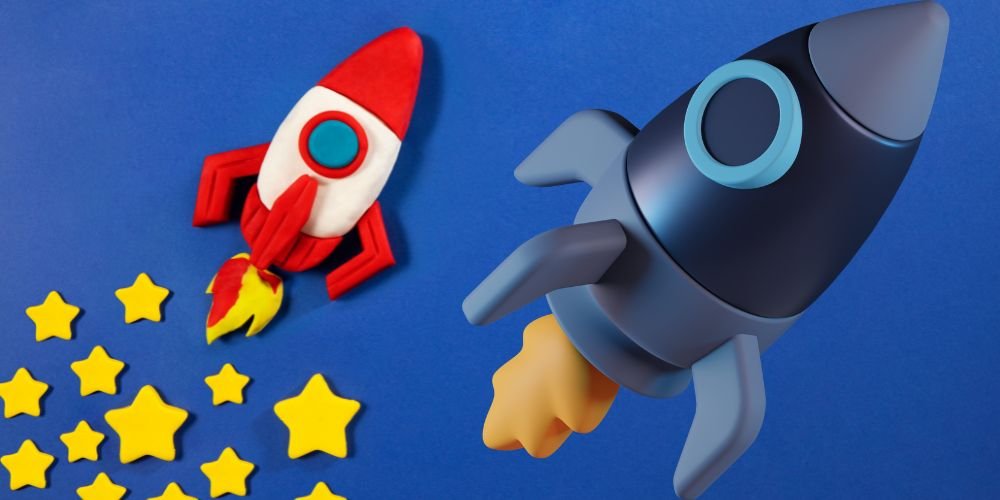Space innovation stands at the forefront of humanity’s quest to explore the cosmos, driving technological advancements, scientific discovery, and the expansion of our understanding of the universe. This article delves into the historical significance, key innovations, transformative technologies, and the future trajectory of space innovation.
The Historical Significance of Space Innovation
The history of space exploration is marked by pivotal moments of innovation that have reshaped our understanding of the cosmos and propelled humanity into the vast expanse beyond Earth’s atmosphere. The space race of the mid-20th century, spurred by geopolitical competition, catalyzed groundbreaking innovations that continue to shape space exploration today.
The Launch of Sputnik 1
The launch of Sputnik 1 by the Soviet Union on October 4, 1957, marked the beginning of the space age and the first artificial satellite in orbit. This historic event demonstrated the ability to reach space and ignited a space race between superpowers, fostering rapid innovation in rocket technology and space exploration.
The Apollo Moon Landings
The Apollo program, led by NASA, achieved the monumental feat of landing humans on the Moon. The culmination of this effort was the Apollo 11 mission in 1969, where astronauts Neil Armstrong and Buzz Aldrin became the first humans to set foot on the lunar surface. The Apollo missions showcased unprecedented innovation in spacecraft design, navigation, and life support systems.
The Space Shuttle Era
NASA’s development and deployment of the Space Shuttle in the early 1980s marked a new era in space innovation. The shuttle’s reusability and versatility allowed for the deployment of satellites, scientific experiments, and the International Space Station (ISS) construction. This era contributed significant advancements in space transportation technology.
Key Innovations in Space Exploration
Space innovation encompasses various technological advancements that have revolutionized our ability to explore and understand the cosmos. These innovations span spacecraft design, propulsion systems, communication technologies, and scientific instruments.
Advanced Propulsion Systems
Innovations in propulsion systems have been instrumental in expanding the reach of space exploration. The development of ion propulsion, solar sails, and advanced chemical propulsion technologies has enabled spacecraft to travel longer distances with greater efficiency, opening up new possibilities for interplanetary and deep-space missions.
Miniaturized Satellites and CubeSats
The miniaturization of satellites, particularly the development of CubeSats, has democratized access to space. These small, standardized satellites have become platforms for scientific research, Earth observation, and technology demonstration, allowing universities, research institutions, and even private entities to participate in space exploration.
Remote Sensing and Earth Observation
Advancements in remote sensing technologies have transformed our ability to monitor Earth from space. Satellites equipped with advanced sensors and imaging instruments provide critical data for climate monitoring, disaster response, agriculture, and environmental research, contributing to a better understanding of our planet.
Artificial Intelligence and Autonomous Systems
Integrating artificial intelligence (AI) and autonomous systems has enhanced the capabilities of spacecraft and rovers. AI enables autonomous decision-making, navigation, and data analysis, reducing dependence on ground control and enabling real-time adaptation to dynamic space environments.
Transformative Technologies in Space Innovation
Space innovation continues to evolve with transformative technologies that hold the potential to revolutionize the future of cosmic exploration and human presence beyond Earth.
Reusable Rocket Technology
The development of reusable rocket technology, exemplified by companies like SpaceX with their Falcon 9 and Falcon Heavy rockets, has significantly reduced the cost of launching payloads into space. Reusability fosters a sustainable and cost-effective approach to space exploration, opening up new possibilities for commercial space activities.
Space Tourism and Commercial Spaceflight
The emergence of commercial space companies, including SpaceX, Blue Origin, and Virgin Galactic, has ushered in the era of space tourism. These companies aim to make space travel accessible to civilians, offering suborbital and orbital experiences that could redefine the future of human space exploration.
In-Situ Resource Utilization (ISRU)
The concept of in-situ resource utilization involves using resources found in space, such as lunar or Martian regolith, for fuel, oxygen, and construction materials. ISRU has the potential to reduce the cost and logistical challenges of deep-space missions by leveraging local resources, paving the way for sustainable exploration and eventual colonization.
Space-Based Solar Power
Space-based solar power captures sunlight in space and transmits the energy to Earth. This innovative concept could provide a continuous and abundant source of clean energy, addressing the growing demand for sustainable power solutions on Earth and supporting future space missions.
Future Trajectory of Space Innovation
As we look to the future, space innovation promises transformative breakthroughs that will shape the next phase of cosmic exploration and human endeavors in the cosmos.
Artemis Program and Lunar Gateway
NASA’s Artemis program aims to return humans to the Moon by the mid-2020s, fostering sustainable lunar exploration. The Lunar Gateway, an orbiting space station around the Moon, will serve as a staging point for crewed missions and international collaboration, showcasing the next chapter in lunar exploration.
Mars Exploration and Human Colonization
The dream of human colonization on Mars drives innovation in propulsion systems, life support technologies, and sustainable habitats. Ongoing and future missions, such as NASA’s Perseverance rover and SpaceX’s Starship project, aim to lay the groundwork for future crewed missions to the Red Planet.
Interstellar Exploration and Breakthrough Technologies
Concepts like Breakthrough Starshot envision interstellar exploration using miniaturized spacecraft propelled by powerful lasers. Breakthrough technologies, including laser propulsion and advanced propulsion systems, may open the door to exploring neighboring star systems within our lifetime.
Space Habitats and Extraterrestrial Resource Utilization
Innovative designs for space habitats, such as rotating space stations and lunar bases, are being explored as humanity looks beyond Earth. Extraterrestrial resource utilization, including mining asteroids and exploiting lunar resources, could provide the raw materials needed for sustained space exploration and habitation.
Conclusion
Space innovation, rooted in human curiosity and the desire to explore the unknown, continues to push the boundaries of what is possible in cosmic exploration. From the historic achievements of the past to the transformative technologies shaping the future, space innovation stands as a testament to human ingenuity, resilience, and the relentless pursuit of knowledge to unravel the mysteries of the cosmos. As we venture into the next era of space exploration, the possibilities are boundless, offering a future where humanity becomes an interplanetary species, leaving an indelible mark on the cosmic tapestry.









